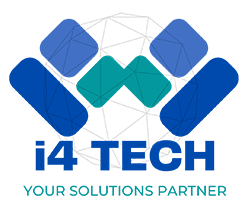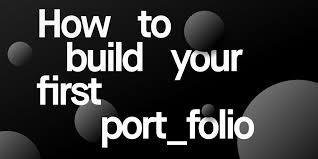Building Your First Portfolio Project
One of the most exciting—and important—milestones in your coding journey is creating your first portfolio project. Not only does this give you a tangible way to showcase your skills, but it also boosts your confidence as you apply your learning to a real-world project.
A portfolio project is your first professional showcase. It demonstrates what you’ve learned, how you approach problems, and your ability to apply coding skills to practical challenges.
🎯 Why Build a Portfolio Project?
- Showcase Your Skills: A portfolio project gives you something concrete to demonstrate to potential employers or clients.
- Stand Out in the Job Market: A strong project shows initiative and creativity, setting you apart from other job seekers or freelancers.
- Boost Confidence: Completing a real project is a huge confidence booster—it’s proof that you can create something functional and useful.
- Learn By Doing: By building a portfolio project, you get hands-on experience solving real problems, debugging, and refining your code.
🛠️ Steps to Building Your First Portfolio Project
1. Choose a Simple, Manageable Idea
Start small—don’t try to build the next big social network! Pick something that you can complete within a reasonable timeframe. Some beginner-friendly ideas include:
- Personal Portfolio Website: Show off your skills, projects, and resume.
- To-Do List App: A classic beginner project to learn CRUD operations.
- Weather App: Use an API to fetch live weather data and display it.
- Blog Platform: Create a simple blog site where you can write and display posts.
2. Plan Before You Start Coding
Map out your project’s structure:
- Design the Layout: What will the user interface look like? Sketch it out or use design tools like Figma or Adobe XD.
- Decide on Features: What functionality do you want to include? List the features and break them down into tasks.
- Choose Your Tools: Select the languages, frameworks, and libraries you’ll use. For example, React for the frontend, Node.js for the backend, or plain HTML, CSS, and JavaScript for simplicity.
3. Code Your Project
Now comes the fun part! Begin building your project by following these steps:
- Start with the Structure: Begin with HTML to structure your content.
- Add Styling: Use CSS or a framework like Tailwind CSS to style your project.
- Make It Interactive: Use JavaScript or a JavaScript framework (React, Vue, etc.) to make your app interactive.
- Test & Debug: Continuously test your project, fix bugs, and refine features.
4. Add Real-World Functionality (Optional)
If you’re feeling more confident, you can expand your project by adding some advanced features:
- Connect to an API: Use a weather API or news API to fetch live data.
- Database Integration: Add a backend with MongoDB or MySQL to store user data.
- Authentication: Learn how to implement user login and registration using Firebase or Passport.js.
5. Deploy Your Project
Once your project is built, it’s time to share it with the world. You can deploy your project for free on platforms like:
- GitHub Pages: Great for static websites and frontend projects.
- Netlify or Vercel: Excellent for full-stack applications and React-based projects.
- Heroku: Perfect for backend services and APIs.
🔥 Tips for a Great Portfolio Project
- Make It Yours: Personalize your project—add a creative twist that reflects your style or interests.
- Clean, Readable Code: Employers appreciate well-structured, readable, and maintainable code. Use comments where necessary and follow good naming conventions.
- Responsive Design: Ensure your project works well on mobile devices, as many users will access it via smartphones.
- Show Your Process: Consider documenting your development process on GitHub or a blog, showing how you solved problems or learned new tools along the way.
🚀 Your Portfolio Project = Your First Step to a Tech Career
Building your first portfolio project is the starting point for your tech career. It shows that you’re not just learning to code—you’re applying your skills to build real-world applications. Plus, when it’s time to apply for jobs, having a portfolio project is an absolute must.
At i4 Tech Integrated Services, we guide you step by step through your portfolio development. Our personalized mentorship ensures that your first project stands out in the competitive tech world.


